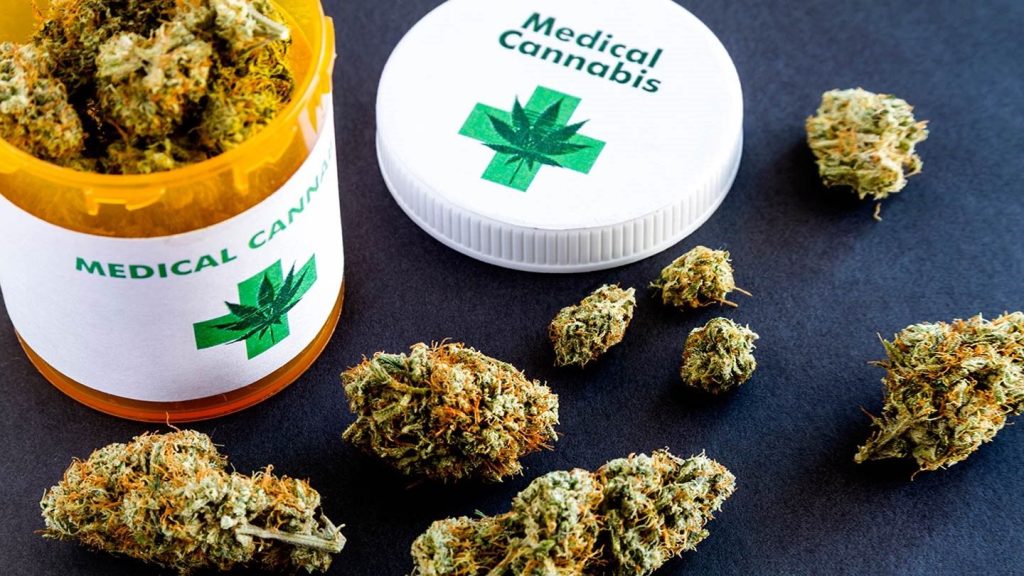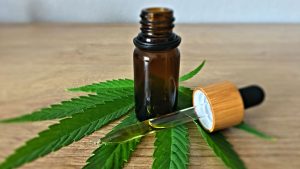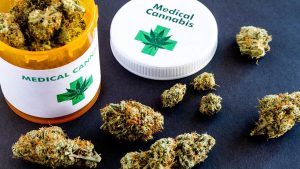Common or street names: Bud, ganja, grass, hashish, hemp, Indian hemp, marijuana, pot, reefer, weed.
What is cannabis?
Cannabis sativa, also known as hemp, is a species of the Cannabinaceae family of plants. Cannabis contains the chemical compound THC (delta-9 tetrahydrocannabinol), which is believed to be responsible for most of the characteristic psychoactive effects of cannabis that leads to the “high” that is experienced when cannabis is consumed. However, not all components of cannabis are psychoactive.
- The dried leaves and flowers (buds) of the cannabis plant are known as marijuana, which can be smoked (through a pipe or bong, hand-rolled into a joint, or consumed in an edible (for example, cookies, brownies, gummies).
- The resinous secretions of the plant are known as hashish, which can be smoked or eaten.
- The fiber of the cannabis plant is cultivated as industrial hemp with uses in textile manufacturing.
Compounds which have a structure similar to THC are known as cannabinoids.
What are the effects of cannabis?
The effects experienced by the cannabis (marijuana) user are variable and will depend upon the dose, method of administration, prior experience, any concurrent drug use, personal expectations, mood state and the social environment in which the drug is used.
Effects of cannabis (marijuana) include:
- an altered state of consciousness. The user may feel “high”, very happy, euphoric, relaxed, sociable and uninhibited.
- distorted perceptions of time and space. The user may feel more sensitive to things around them, and may also experience a more vivid sense of taste, sight, smell and hearing.
- increased pulse and heart rate, bloodshot eyes, dilated pupils, and often increased appetite (“the munchies”).
- impaired coordination and concentration, making activities such as driving a car or operating machinery difficult and dangerous.
- negative experiences, such as anxiousness, panic, self-consciousness and paranoid thoughts.
People who use large quantities of cannabis may become sedated or disoriented and may experience toxic psychosis — not knowing who they are, where they are, or what time it is. High doses may also cause fluctuating emotions, fragmentary thoughts, paranoia, panic attacks, hallucinations and feelings of unreality.
Various concentrations of THC, cannabidiol (CBD), or hybrid products exist in products found cannabis dispensaries in states that have legalized recreational marijuana use.
How long does it take cannabis to work?
The effects of inhaled cannabis are felt within minutes, reach their peak in 10 to 30 minutes, and may linger for two or three hours. However, edible cannabis, which may contain higher amount of THC, can take a longer period of time to reach full effect as it must be absorbed from the gastrointestinal tract. The effect of edible cannabis can last up to 12 hours.
THC is highly lipid soluble and can be stored in fat cells possibly for several months. Stored THC is released very slowly, and unevenly, back into the bloodstream.
Medical uses
While cannabis (marijuana) remains a federal DEA Schedule 1 controlled substance, research has resulted in development and marketing of medications which are synthetic prescription cannabinoid products.
-
- Marinol (dronabinol) is used for the control of nausea and vomiting caused by chemotherapeutic agents used in the treatment of cancer and to stimulate appetite in AIDS patients.
- Cesamet (nabilone) is used for the control of nausea and vomiting caused by chemotherapeutic agents used in the treatment of cancer.
Safety of cannabis
Consumption of marijuana leads to a psychoactive drug effect. Do not drive, operate machinery, or perform other hazardous activities while using cannabis (marijuana). It may cause dizziness, drowsiness, and impaired judgment.
States that have legalized marijuana for recreational or medical consumption have laws in place that make it illegal to drive under the influence of marijuana; review each states law carefully.
- Do not drink alcohol while using cannabis. Alcohol will increase dizziness, drowsiness, and impaired judgment.
- Cannabis may increase the effects of other drugs that cause drowsiness, including antidepressants, alcohol, antihistamines, sedatives (used to treat insomnia), pain relievers, anxiety medicines, seizure medicines, and muscle relaxants, among others.
- Cannabis is still considered a federal Schedule 1 drug under the U.S. Controlled Substances Act.
Medical Cannabis (Medical Marijuana)
The most common uses for medical cannabis include for severe or long-term pain, nausea and vomiting due to chemotherapy (cancer treatments), and painful muscle spasms. However, there are several medical conditions for which patients can use medical marijuana, which can vary by state law:
- Amyotrophic lateral sclerosis (ALS)
- Cancer-related pain
- Glaucoma
- HIV/AIDS-related weight loss or nausea/vomiting
- Huntington’s disease
- Inflammatory bowel disease
- Multiple sclerosis
- Muscle spasms
- Neuropathy
- Parkinson’s disease
- Panic disorders
- Post Traumatic Stress Disorder (PSTD)
- Seizures (epilepsy)
- Severe pain (and if an alternative to opioid use); chronic pain not amenable to other treatments
- Severe nausea or vomiting
- Spinal cord injury with spasticity
- Tourette’s syndrome
- Cachexia or dramatic weight loss and muscle atrophy (wasting syndrome)
Medical marijuana comes in various forms for use, including oil, tablet or capsule, liquid that can be vaporized, nasal spray, and the traditional dried leaves and buds thay can be smoked or taken as edibles.
Which states / territories have legalized medical marijuana?
Multiple states, territories and the District of Columbia now legally allow cannabis for personal medical use. Rules surrounding the use of medical cannabis (medical marijuana) vary by state. The first state in the union to legalize the medical use of marijuana was California in 1996. States that allow medical marijuana include:
- Alabama
- Alaska
- Arizona
- Arkansas
- California
- Colorado
- Connecticut
- Delaware
- District of Columbia
- Florida
- Guam (territory)
- Hawaii
- Illinois
- Iowa
- Louisiana
- Maine
- Maryland
- Massachusetts
- Michigan
- Minnesota
- Missouri
- Montana
- Nevada
- New Hampshire
- New Jersey
- New Mexico
- North Dakota
- Northern Mariana Islands (Commonwealth)
- New York
- Ohio
- Oklahoma
- Oregon
- Pennsylvania
- Puerto Rico (territory)
- Rhode Island
- South Dakota
- Utah
- US Virgin Islands (territory)
- Vermont
- Virginia
- Washington
- West Virginia
Note: some states may have passed laws but still may be in the process of finalizing procedures and rules surrounding distribution or retail sales.
Medical marijuana in the U.S. is controlled at the state level. It is important to recognize that these state marijuana laws do not change the fact that using marijuana continues to be an offense under Federal law. Per federal law, cannabis is illegal and a schedule 1 substance as noted in the U.S. Controlled Substances Act. Use of medical marijuana outside of the state laws for illegal use or trafficking will not be tolerated by state or federal government.
Epidiolex: use in childhood seizures
In June 2018, the FDA approved Epidiolex (cannabidiol or CBD) from GW Pharmaceuticals. Epidiolex is an oral solution for patients two years and older to treat Lennox-Gastaut syndrome and Dravet syndrome — two severe forms of seizures that begin in childhood.
Epidiolex is the first FDA-approved treatment in the U.S. that contains a purified drug substance derived from marijuana and the first treatment for Dravet syndrome. In April 2020 the DEA notified the manufacturer GW Pharma that it no longer considers Epidiolex a controlled substance (was previously a C-V controlled substance) under the Federal Controlled Substance Act.
In robust Phase 3 studies with 516 patients with either seizure type, Epidiolex, taken along with other medications, was shown to be effective in reducing the seizure frequency when compared with placebo.
Common side effects with Epidiolex can include:
- tiredness
- elevated liver enzymes
- diarrhea
- lowered appetite.
Which states / territories allow recreational use of marijuana?
Multiple US states, territories and the District of Columbia have legalized the use of recreational marijuana; however, not all of these states permit the commercial production or retail sale of recreational cannabis. Check with each state for rules surrounding use of recreational marijuana.
- Colorado (2012)
- Washington (2012)
- Oregon (2014)
- Alaska (2014)
- Washington D.C. (2014)
- California (2016)
- Massachusetts (2016)
- Maine (2016)
- Nevada (2016)
- Vermont (2018)
- Michigan (2018)
- Illinois (2019)
- Guam (2019)
- Arizona (2020)
- Montana (2020)
- South Dakota (2020)
- New Jersey (2020)
- New York (2021)
- New Mexico (2021)
- Virginia (2021)
- Maryland (2022)
- Missouri (2022)
Note: some states may have passed laws but still may be in the process of finalizing procedures and rules surrounding distribution or retail sales.
It is important to note that the federal government still considers cannabis an illegal drug and the distribution and sale of marijuana is a serious crime. Under the Federal Controlled Substances Act (CSA), marijuana is still considered by the federal government a Schedule 1 drug.
In the past (for example, in the Obama administration) it has been stated that it is unlikely that the federal government is interested in pursuing individuals complying with state-mandated regulations surrounding legalized cannabis for recreational use, although the CSA law still gives them authority to do so. These rules can and have change based on political changes that may occur in the legislature.
Additional states continue to undertake or pursue citizen petitions in the future to legalize the recreational use of cannabis. According to the Brookings Institute, Presidential election years bring out an electorate more favorable to cannabis legalization than the off-year electorate. In one survey, two out of every three Americans now support legalization.
Specific city and county laws have been enacted to regulate how citizens and tourists may possess and consume marijuana. Penalties exist for driving while under the influence of marijuana.
Cities, municipalities, employers, landlords, and universities may have special policies about the use of marijuana. Use on any federal land, national park or monument is illegal. Be sure to check all rules before use.
For more information see: Marijuana
Cannabis side effects
Long term effects of heavy use can include:
- irritation to the lungs, risk of developing chronic bronchitis and an increased risk of developing cancer of the respiratory tract (more likely to do with smoking).
- exacerbation of pre-existing cardiovascular disease, as cannabis use significantly raises the heart rate.
- decreased concentration levels, reduced short-term memory and difficulties with thinking and learning (resolved if cannabis use stops).
- decreased sex drive in some people. Chronic use can lower sperm count in males and lead to irregular periods in females (resolved if cannabis use stops).
- dependence on cannabis — compulsive need to use the drug, coupled with problems associated with chronic drug use
- cannabinoid hyperemesis syndrome
What is Cannabinoid Hyperemesis Syndrome?
Long-term, heavy use of marijuana (THC) can lead to a condition called cannabinoid hyperemesis syndrome (CHS). In this syndrome, persistent nausea, vomiting, and stomach pain can occur in people who have previously smoked marijuana long-term (six months or more). Dehydration, electrolyte disturbance, and acute kidney failure can occur. Not all heavy users of cannabis will develop this condition. Researchers think it is much more common in the U.S. than previously thought, especially with continued legalization of recreational marijuana.
The cause of the persistent vomiting is not known, but may involve alterations in central neurotransmitters and interactions with cannabidiol receptors also found in the stomach. CHS is considered a paradoxical effect, because use of cannabinoids typically decrease nausea and vomiting.
The only known cure is to stop using cannabis completely. Extremely hot showers and topical capsaicin cream have been found to relieve symptoms of CHS, but exactly why this occurs is not known. Antinausea medications are not usually effective for CHS. Stopping the use of marijuana completely will usually relieve symptoms within days or weeks, but it is not known if marijuana consumption can be resumed.
Researchers have reported that they are working on treatments for CHS, as well as new medical marijuana products that do not cause CHS.
What should I avoid?
Do not drive, operate machinery, or perform other hazardous activities while using cannabis. Cannabis may cause dizziness, drowsiness, and impaired judgment. It is illegal to be under the influence of marijuana and drive.
Avoid alcohol while using cannabis. Alcohol will increase dizziness, drowsiness, and impaired judgment.
Cannabis may increase the effects of other drugs that cause drowsiness, including antidepressants, alcohol, antihistamines, sedatives (used to treat insomnia), pain relievers, anxiety medicines, seizure medicines, and muscle relaxants.
Do not use cannabis if you are pregnant or could become pregnant. There is some evidence that women who smoke cannabis during the time of conception or while pregnant may increase the risk of their child being born with birth defects. Pregnant women who continue to smoke cannabis are probably at greater risk of giving birth to low birthweight babies.
Do not use cannabis if you are breast-feeding a baby.
Do not leave prescription THC medications (dronabinol, nabilone), marijuana, hash oil, or cannabis-infused edibles any place where children, pets, or anyone else may unknowingly consume the product. Serious side effects can occur. States laws exist that require certain amounts to be placed in a locked and secure container or area.
What happens if I overdose?
- Symptoms of overdose include fatigue, lack of coordination, panic attack, paranoia and psychosis.
- Seek emergency medical attention (call 911, have someone drive to the emergency room) if needed. For example, a panic attack, difficulty breathing, chest pain, or psychiatric symptoms may require emergency treatment.
- Edibles (e.g., chocolate bars, gunny bears, cookies) may contain higher concentrations of THC and can be linked with more severe, unpleasant psychoactive side effects. Edibles can take a longer time for their effect, may be more potent, and determining a correct dose can be difficult.
What other drugs will affect cannabis?
Cannabis may increase the effects of other drugs that cause drowsiness, including:
- antidepressants
- alcohol
- antihistamines
- sedatives (used to treat insomnia)
- pain relievers
- anxiety medicines
- seizure medicines
- muscle relaxants.



